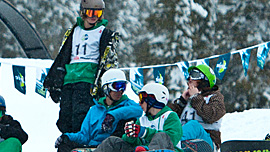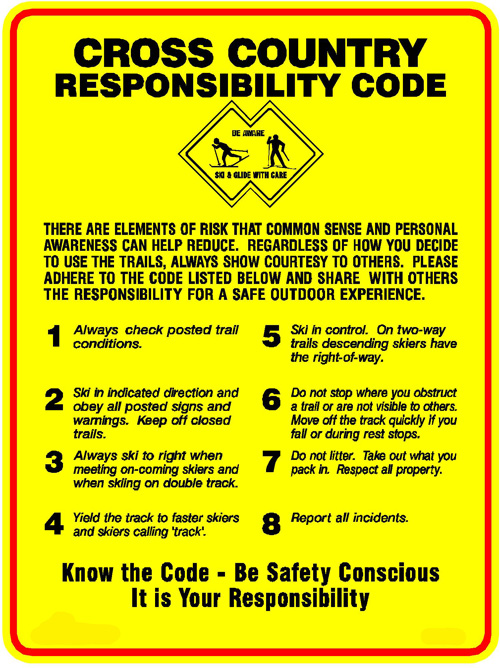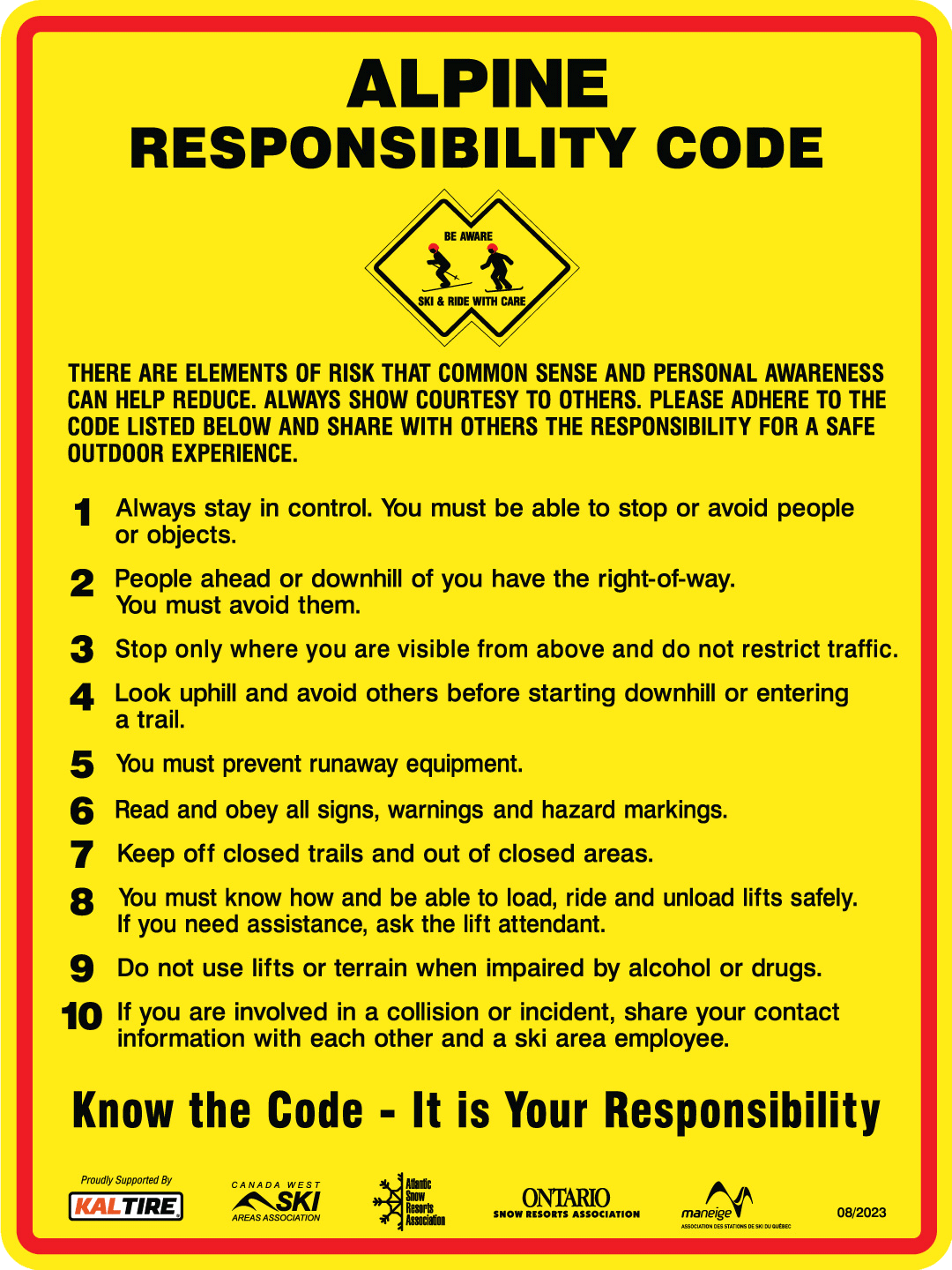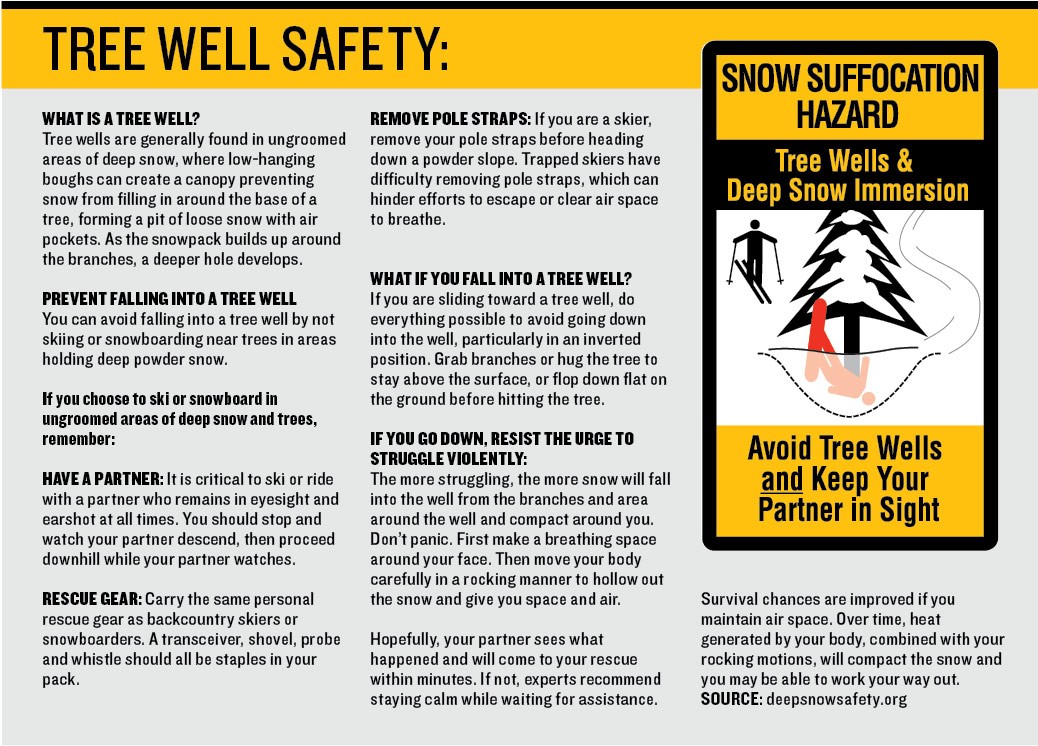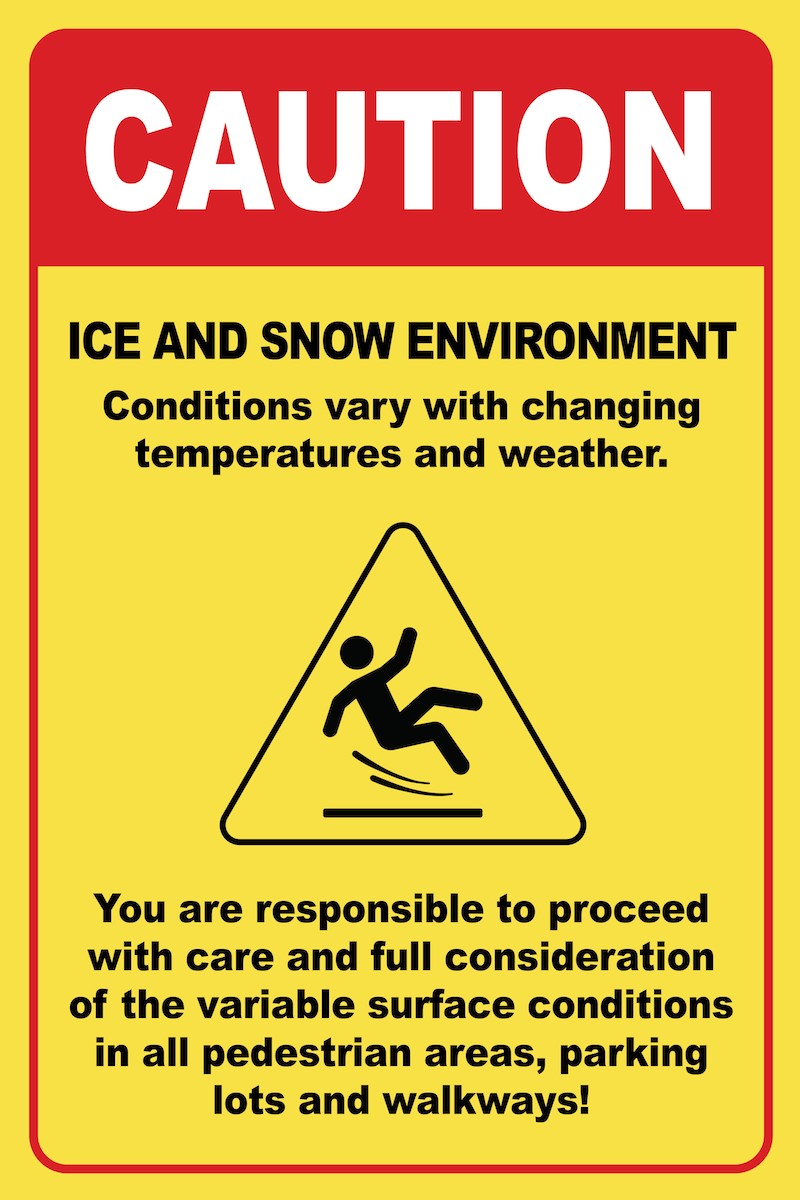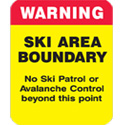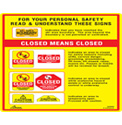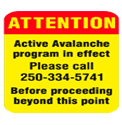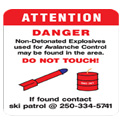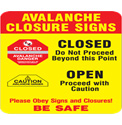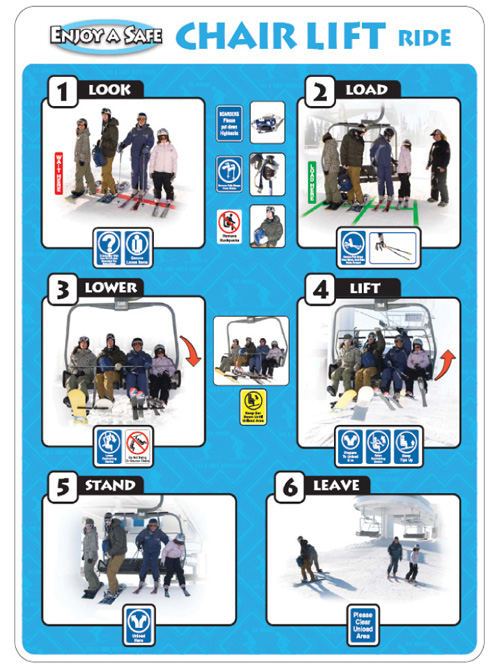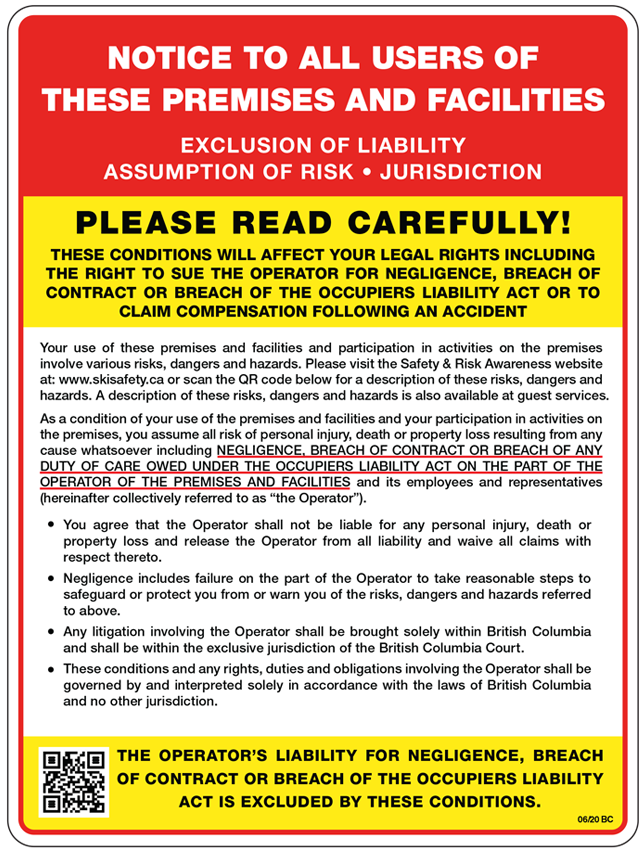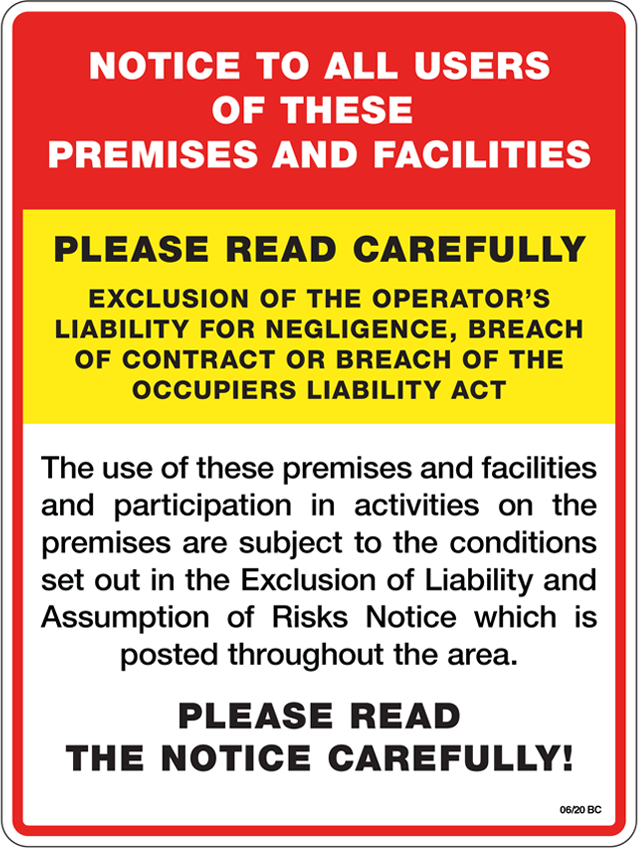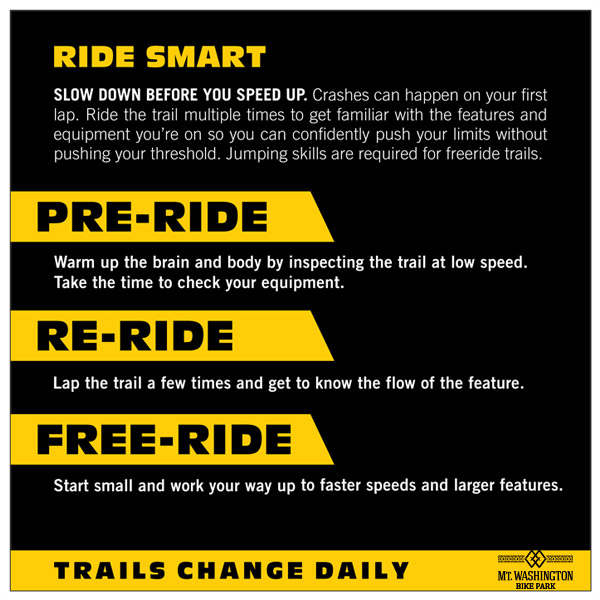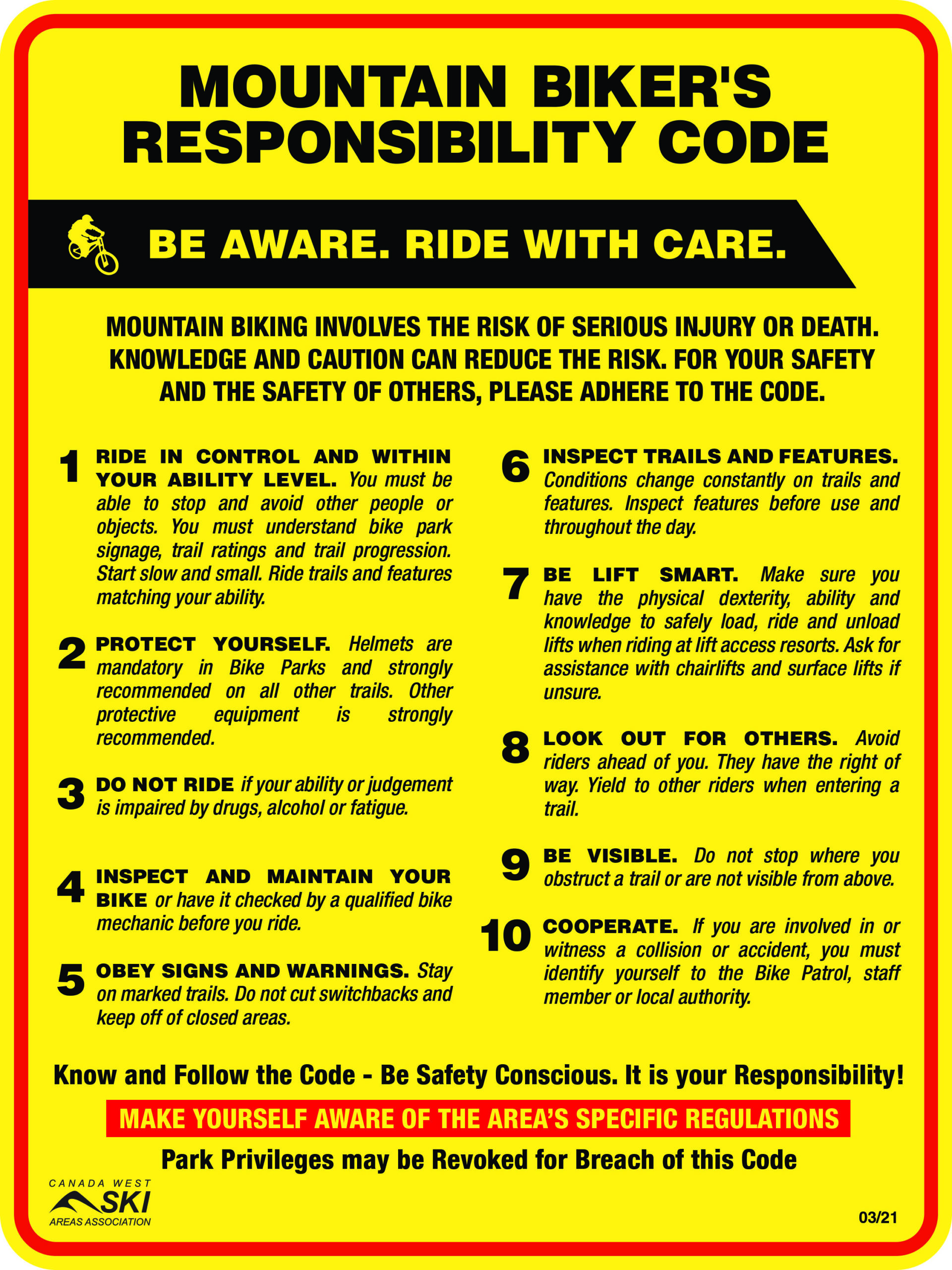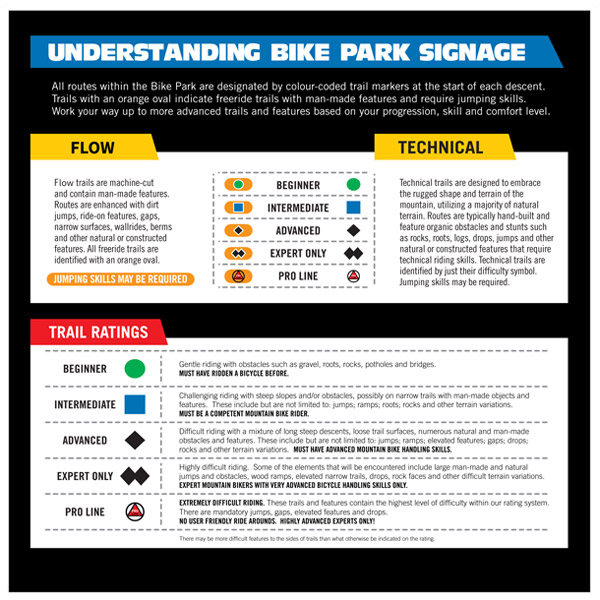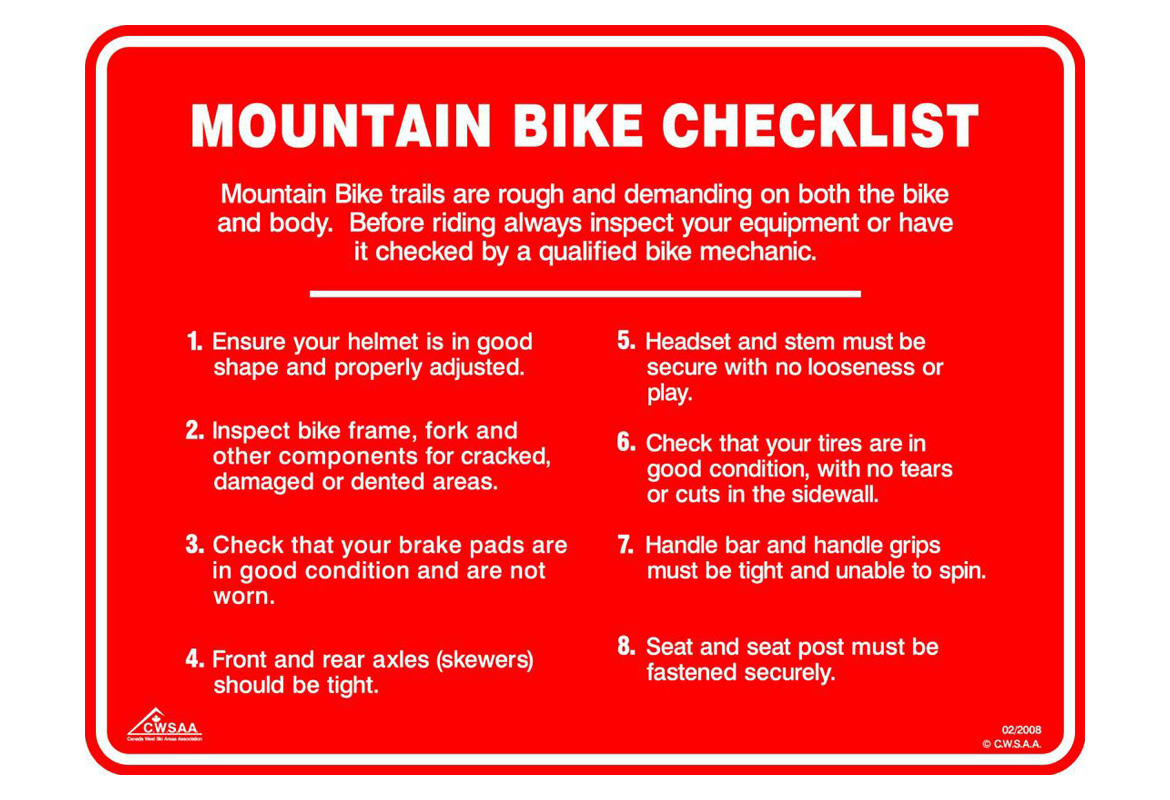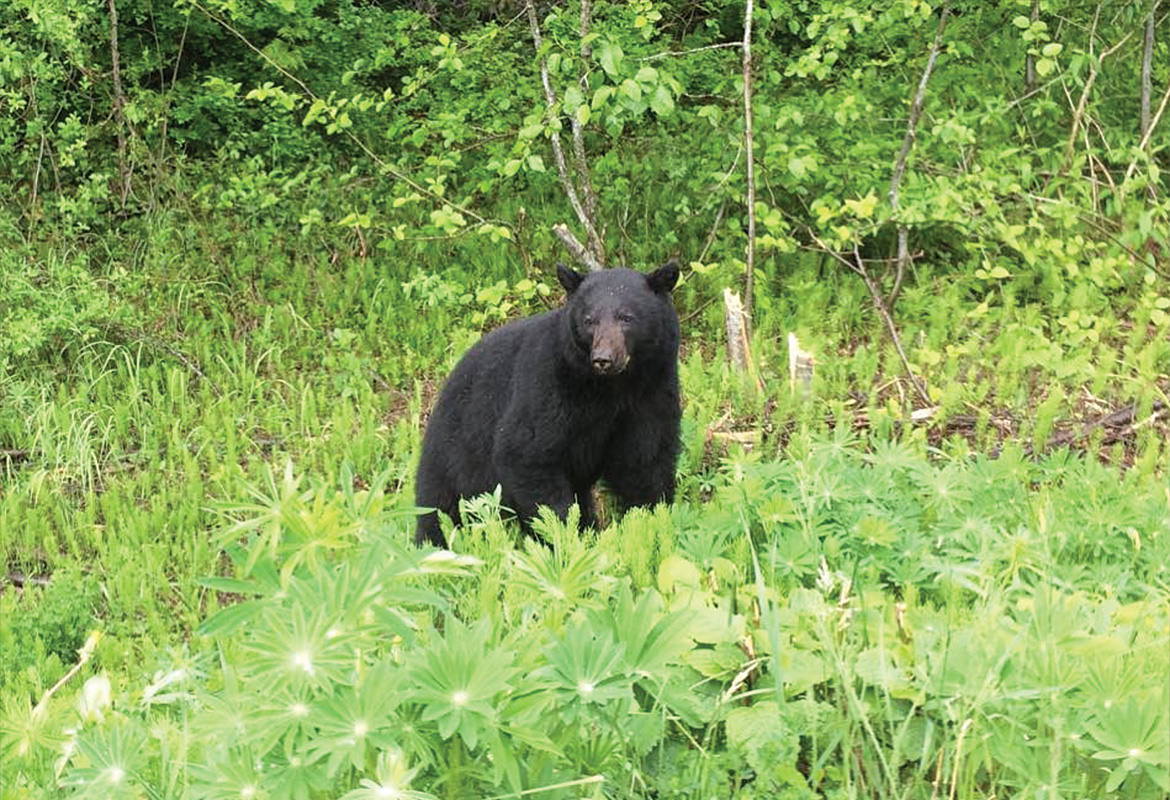Safety & Risk Awareness
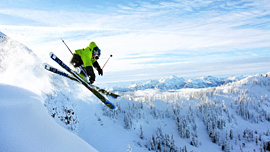
Alpine Responsibility
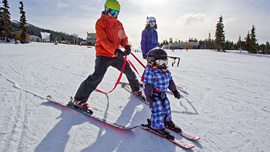
Trail Difficulty
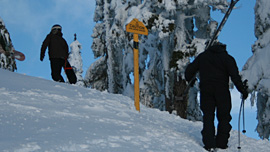
Mountain Signage
Helmet Usage
Aerial Photography/Videography
Public Drone Use NOT Permitted
DRONE POLICY UPDATE AS OF JANUARY 2025:
Mount Washington Alpine Resort reserves the right to authorize drone usage on any mountain property. As of this time, public operators are NOT permitted to fly any drone equipment on the slopes or surrounding areas.
- Please refrain from flying drones over any mountain locations. This includes but is not limited to: mountain terrain, chairlifts, parking lots, buildings, public spaces, etc.
- Operating drones within BC Parks / Strathcona Park is never permitted.
- With pre-approval and necessary insurance, some third-party content partners may be permitted case-by-case to fly drones for special events.
- Anyone found in violation of this drone policy will have their mountain access suspended (ticket/season pass, etc.)
THE ALPINE RESPONSIBILITY CODE APPLIES TO ALL SKIERS AND SNOWBOARDERS!
Violation of skiing/boarding policies by Mount Washington Alpine Resort users could result in loss of lift privileges.
VIOLATION
- Violation of the ALPINE RESPONSIBILITY CODE.
- Violation of the Alpine Responsibility Code resulting in a collision.
- Leaving the scene of an incident in which you were involved or failing to report the incident to Patrol.
- Being uncooperative, use of inappropriate language and/or attempting to evade Patrol or other authority.
- Skiing or boarding PERMANENTLY CLOSED areas or AVALANCHE-CLOSED areas.
DISCIPLINARY ACTION
- (1) 1st Offence - Loss of lift privileges for 1 week to duration of season.
(1) 2nd Offence - Loss of lift privileges for 2 weeks to duration of season.
(1) 3rd Offence - Loss of lift privileges for remainder of season. - (2) Loss of lift privileges for 4-6 weeks.
- (3) Loss of lift privileges for remainder of season.
- (4) Loss of lift privileges for remainder of season.
- (5) Loss of lift privileges for duration of season.
Alpine & Nordic Responsibility Code
There are elements of risk that common sense and personal awareness can help reduce. Regardless of how you decide to use the slopes, always show courtesy to others. Please adhere to the code listed below and share with others the responsibility for a safe outdoor experience. Be aware! Ski and ride with care.
- Always stay in control. You must be able to stop or avoid other people or objects.
- People ahead of you have the right-of-way. You must avoid them.
- Stop only where you are visible from above and do not restrict traffic.
- Look uphill and avoid others before starting downhill or entering a trail.
- You must prevent runaway equipment.
- Read and obey all signs, warnings, and hazard markings.
- Keep off closed trails and out of closed areas.
- You must know how and be able to load, ride, and unload lifts safely. If you need assistance, ask the lift attendant.
- Do not use lifts or terrain when impaired by alcohol or drugs.
- If you are involved in a collision or accident, share your contact information with each other and a ski area employee.
Basic Safety
- Plan ahead for variations in weather, dress and gear up appropriately, proper tuned gear, warmth and visibility are key components of safety – if in doubt check us out at the Rossignol Demo Centre or at the Outdoor Elements retail store.
- Be aware of changing snow surface conditions check the groomed run reports on line at our web site or smart phone app
- Only ski and snowboard in areas compatible with your ability – progression is the key to safe success
- If you fall, and you are unhurt, on the slopes or chairlift ramp move quickly to the side to avoid becoming an obstacle for other skiers or riders who could hurt you or themselves
- Slow skiing areas are intended for beginner skiers - passing or jumping are not allowed in these areas
- It is your responsibility to follow the Alpine Responsibility Code or Nordic Responsibility Code at all times
- Mount Washington's inbound terrain includes natural hazards including cliffs and cornices. Ski with caution, unmarked objects and hazards may exist.
Safe Slopes Team:
Our full time Safe Slopes team members are out on the hill day and night during operation patrolling the runs enforcing the Alpine Responsibility Code. They are on the lookout for people who violate the A.R.C. or are being reckless in slow zones or other areas. They are there offering tips and rewards on how to be or for being in compliance but also issuing warnings and suspending skiing privileges in severe cases to those not following the code. Know the Code it is YOUR responsibility! You can help the Safe Slope Team members by skiing or riding in control, by travelling at the same speed as others in Slow Zones, and by using common sense and courtesy while on our mountain.
Tobogganing Policy
Tobogganing (using snow disks, crazy carpets, GT snow Racers, garbage bags or any other non-approved snow sliding devices) at any time is NOT PERMITTED on any Mount Washington Property with the exception of the Nordic Tobogganing area at the Raven Lodge. A much better sliding option is the New Snow Tubing Park. The park provides a safe and controlled sliding environment. The best part is you don't have to walk uphill - there's a lift!
Helmet Usage
Mount Washington Alpine Resort recommends wearing helmets for skiing and riding. Skiers and snowboarders are encouraged to educate themselves on the benefits and limitations of helmet usage. The primary safety consideration, and obligation under the Alpine Responsibility Code, is to ski and ride in a controlled and responsible manner. Lids On Kids
Tree Well Information
- Always ski or ride with a partner
- Keep your partner in sight and stay in visual contact so they can see you if you fall
- Stay close enough to either pull or dig each other out
Natural hazards such as tree wells occur within and outside of the ski area boundary. Mount Washington Alpine Resort would like to remind all guests to ski and ride with care, obey all mountain signage, and ski/ride with a partner or group. A tree well is a hole or depression that forms around the base of a tree while snow accumulates. A tree well incident occurs when a person falls, head first, into an area of deep snow around the base of a tree and becomes immobilized. The more the person struggles the more entrapped in the snow they become. The risks of a tree well accident or fatality can be reduced by following these basic practices.
Common Questions
How can I tell that I'm in a Slow Zone?
There are a couple of ways. First of all, have a look at our trail map. The Slow Zones are highlighted in green. You will notice that most of them are beginner runs. When you are on the mountain look for 'Slow' or 'Slow Zone' banners.
How fast is too fast?
Many people have a hard time remembering what it was like to be a beginner skier or snowboarder and having to worry about whether there is enough space to attempt a turn. So first off, think about giving people some space. Next, remember that you must always be in control whether you are on an expert run or in a Slow Zone. This is the first point of the Alpine Responsibility Code. If you are in the air, you have no control over your speed or direction. Jumps and hits are not allowed in Slow Zones. The speed expected is relevant to how many people are on the run. If there is no one on the run, you may do short radius turns. When there are more people on the run the 10% Rule is in effect. You may pass people at a speed of approximately 10% faster than the flow of other skier traffic on the run.
Why can't I go as fast as I want when there's no one else on the run?
The Slow Zones are on beginner runs. One of the biggest users of Slow Zones are kids. Kids don't have a high awareness of what other people are doing and are easily distracted. They might be on one side of the run and see something that they want to take a closer look at on the other side and just veer over and cross the run without checking to see if anyone is coming. Kids and adults that are learning to ski also tend to fall on terrain transitions (knolls) and can be trying to recover from a crash in an area that can't be seen from above.
Uphill Travel
Mount Washington does not allow uphill travel on any of our Alpine runs at this time. Uphill travel is restricted to select Nordic trails only. This does not include areas specifically designated for boot packing, not on runs.
Snow Skates
Always use and wear the appropriate device to prevent runaway equipment. The use of the following equipment is not permitted at Mount Washington Alpine Resort: snowblades, snow bikes, snowscooters, snowskates and boot-skis. It is also forbidden to slide down the slopes on a sled, crazy carpet, a three-skis or a toboggan. The use of mini-skis or snowskates is NOT permitted even with standard ski bindings.
Trail Signage
Green Circle
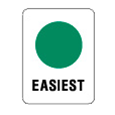 The easiest runs on the mountain. Green runs are groomed, generally wide and have gentle slopes. On green runs when there is a steeper pitch, the pitch is wide to allow for big turns.
The easiest runs on the mountain. Green runs are groomed, generally wide and have gentle slopes. On green runs when there is a steeper pitch, the pitch is wide to allow for big turns.
Double Black Diamond
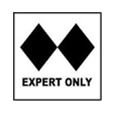 These runs are the most difficult expert terrain on the mountain, un groomed, step and narrow.
These runs are the most difficult expert terrain on the mountain, un groomed, step and narrow.
Blue Square
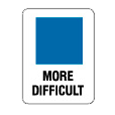 This category has the greatest variation in runs, these runs are more difficult. Blue runs can be groomed or ungroomed
This category has the greatest variation in runs, these runs are more difficult. Blue runs can be groomed or ungroomed
Black Diamond
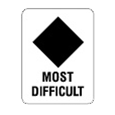 These runs are difficult, generally un groomed, steeper and narrower. Before attempting black runs, people should be comfortable with un groomed blue runs.
These runs are difficult, generally un groomed, steeper and narrower. Before attempting black runs, people should be comfortable with un groomed blue runs.
Terrain Signage
CLOSED / AVALANCHE HAZARD
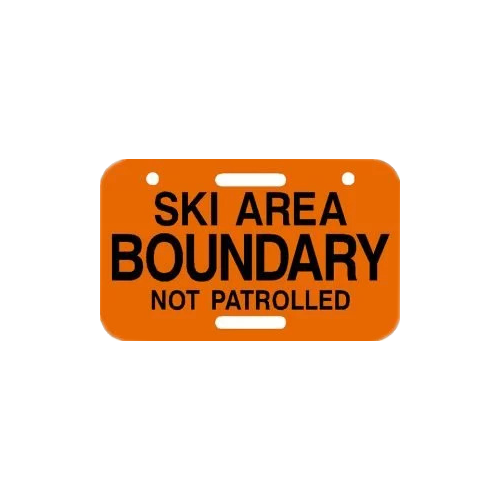
Ski Area Boundary
Not Patrolled
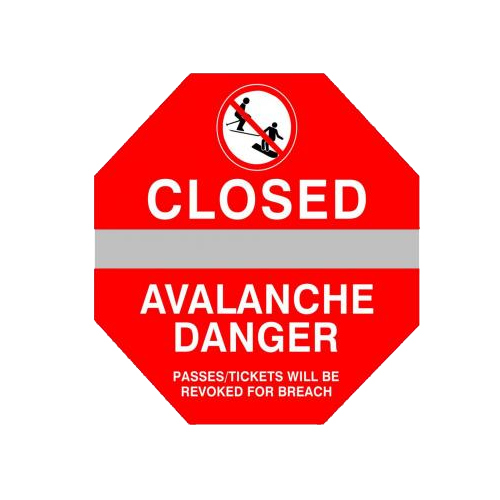
AVALANCHE CLOSURES
CLOSED
This sign is used for permanent or temporary closure of areas within the ski area. Avalanche Closures keep Employees and Guests out of harm’s way while active avalanche control is taking place or when the hazard is too high. Lift access privileges will be suspended for entering these areas when closed.
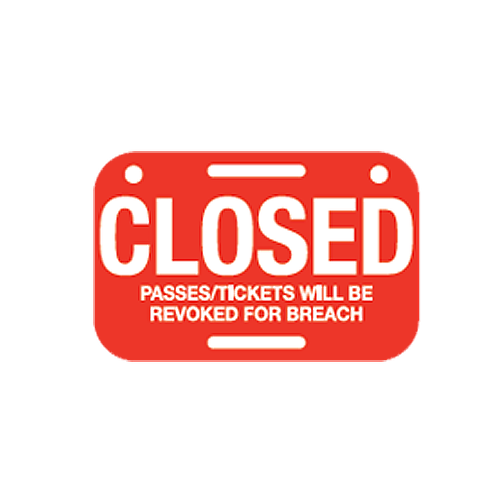
AREA CLOSURES
CLOSED MEANS CLOSED
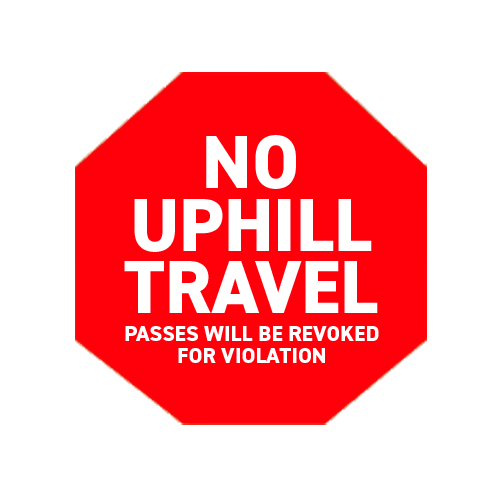
NO UPHILL TRAVEL
NO HIKING
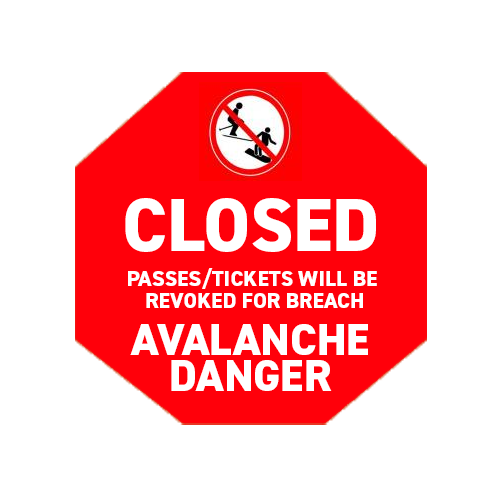
PERMANENT AVALANCHE
CLOSURE
SNOWMOBILES
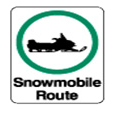 These signs indicate that you may encounter snowmobiles in this area. If you do encounter a snowmobile coming towards you make eye contact with the operator, slow down and if possible without crossing the path of the snowmobile move to the opposite side of the path of the snowmobile and stop. If it is not possible to move to the opiate side of the path of the snowmobile and stop simply make your way to the side of the run and stop there. Make sure it is all clear before starting down hill again.
These signs indicate that you may encounter snowmobiles in this area. If you do encounter a snowmobile coming towards you make eye contact with the operator, slow down and if possible without crossing the path of the snowmobile move to the opposite side of the path of the snowmobile and stop. If it is not possible to move to the opiate side of the path of the snowmobile and stop simply make your way to the side of the run and stop there. Make sure it is all clear before starting down hill again.
MARGINAL SKIING
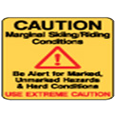 Marginal Skiing signs are used to identify runs that have limited snow cover, but are still determined "skiable". These runs may have exposed rocks, grass and dirt. Incurring damage to your skis or snowboard on these runs is likely. It is best to avoid these runs or at the very least ski/ride with extreme caution.
Marginal Skiing signs are used to identify runs that have limited snow cover, but are still determined "skiable". These runs may have exposed rocks, grass and dirt. Incurring damage to your skis or snowboard on these runs is likely. It is best to avoid these runs or at the very least ski/ride with extreme caution.
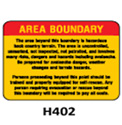
Lift Safety
Catching a Lift
- Load at designated areas only.
- Read the rules for each lift carefully before loading.
- Gear must be attached to your feet. Carrying your gear is not permitted.
- No winter season foot passengers or travel without ski/snowboard equipment.
- Remove the pole straps from your wrists.
- Hold the poles point down before entering the loading area.
- Sit down properly and hold on to safety equipment.
- Lower the safety bar.
- Listen to and obey the operator’s instructions at all times.
On Your Way to the Top
- Keep the tips of your skis or snowboard up.
- Always keep long hair, hats and scarves secure to avoid entanglement.
- Remain seated and don’t bounce or swing on the chair lift.
- Never throw or drop anything from the lift.
- Mt. Washington is a smoke-free resort. Smoking is NOT permitted anywhere.
Age Restrictions
- Tots 3+ are permitted to ride the chairlifts (see below).
- To ride the chairlift, children must be able to aid in self-rescue in the unlikely event of an emergency. We Appreciate Your Cooperation For Your Safety.
When You've Reached the Top
- Unload at designated areas only.
- Clear the unloading area immediately.
- Listen to and obey the operator's instructions at all times.
- Report any problems or concerns to the lift operator right away.
Drone Use NOT Permitted
DRONE POLICY UPDATE AS OF JANUARY 2025:
Mount Washington Alpine Resort reserves the right to authorize drone usage on any mountain property. As of this time, public operators are NOT permitted to fly any drone equipment on the slopes or surrounding areas.
- Please refrain from flying drones over any mountain locations. This includes but is not limited to: mountain terrain, chairlifts, parking lots, buildings, public spaces, etc.
- Operating drones within BC Parks / Strathcona Park is never permitted.
- With pre-approval and necessary insurance, some third-party content partners may be permitted case-by-case to fly drones for special events.
- Anyone found in violation of this drone policy will have their mountain access suspended (ticket/season pass, etc.)
Summer Safety
Bike Park Safety Information
ALL RIDERS, PARENTS AND GUARDIANS
Bike Park Policies
AGE POLICY
- Children 5 yrs and under are not permitted in the bike park.
- Children 6-12 are required to be accompanied by a parent/legal guardian (19yrs or older) when riding in the bike park.
- Children 13-15 are strongly recommended to be accompanied by a parent/legal guardian (19yrs or older) when riding in the bike park.
The parent or guardian must sign the bike park waiver for the child at the time of purchase at the ticket kiosk.
BIKE SIZE
BRAKE RECOMMENDATION
All bikes should have one functioning brake per wheel. Disc brakes are recommended. Steep grades necessitate disc brakes for adequate stopping power. Cantilever brakes will increase the fatigue factor as more effort will be required to maintain control.
SHOCK RECOMMENDATION
Full suspension bikes are recommended to navigate the terrain you will expect to find on the trails. Ensure that your suspension is tuned properly and is set up for your body weight and riding ability.
Ride Smart
SLOW DOWN BEFORE YOU SPEED UP
Crashes can happen on your first lap. Ride the trail multiple times to get familiar with the features and equipment you’re on so you can confidently push your limits without pushing your threshold. Jumping skills are required for FreeRide trails.
PRE-RIDE
Warm up the brain and body and inspect the trail at low speed.
RE-RIDE
Lap a trail a few times and get to know the flow of the features.
FREE-RIDE
Start small and work your way up to faster speeds and larger features.
Information for Parents
The Mount Washington bike park is a significantly different experience from cross country riding. The trails require constant physical and mental effort in order for all riders to maintain control.
LIFTS
Boarding the lift requires significant strength when loading a bike and children may require assistance. If you are unfamiliar with the bike loading process, please let our staff know and they can walk you through a demonstration before proceeding to the lift.
EQUIPMENT
The bike park trails are specifically designed for full suspension mountain bikes. The trails are rocky, bumpy and become much more difficult without high quality suspension. Without full suspension, fatigue becomes a factor much sooner. The steep grades necessitate disc brakes for adequate stopping power. Cantilever brakes will increase the fatigue factor as more effort will be required to maintain control. All bike park participants should ride a properly sized bike and should be able to stand over the seat with their feet flat on the ground. A bike that is too large or with a high seat post increases the risk of injury. Jr DH rentals are available at the Rental Shop and our rental tech will help ensure your child is fitted with the right size bike.
CLOTHING
Protective clothing and equipment is mandatory for young riders. The best protection from abrasion requires a properly fitted full-faced helmet, gloves, long pants, long sleeves, leg armour, arm armour and solid running shoes.
TRAILS
The level of risk increases with the level of difficulty. Black trails often have significant drops and jumps that require skill and experience to navigate. Many difficult trails have a "gate-keeper" feature at the top designed to keep riders with insufficient skills off trails that will be beyond their ability, do not ride around these features. Young riders become a hazard to other riders if they are unable to ride a trail or move out of the way. Children should be accompanied by an adult at all times and should be monitored for fatigue regularly.
What Bike to Ride
Riding the Bike Park requires a different type of mountain bike than you might be used to. Mountain bikes with full suspension with the right geometry and components for downhill riding will make your day in the park safe and fun.
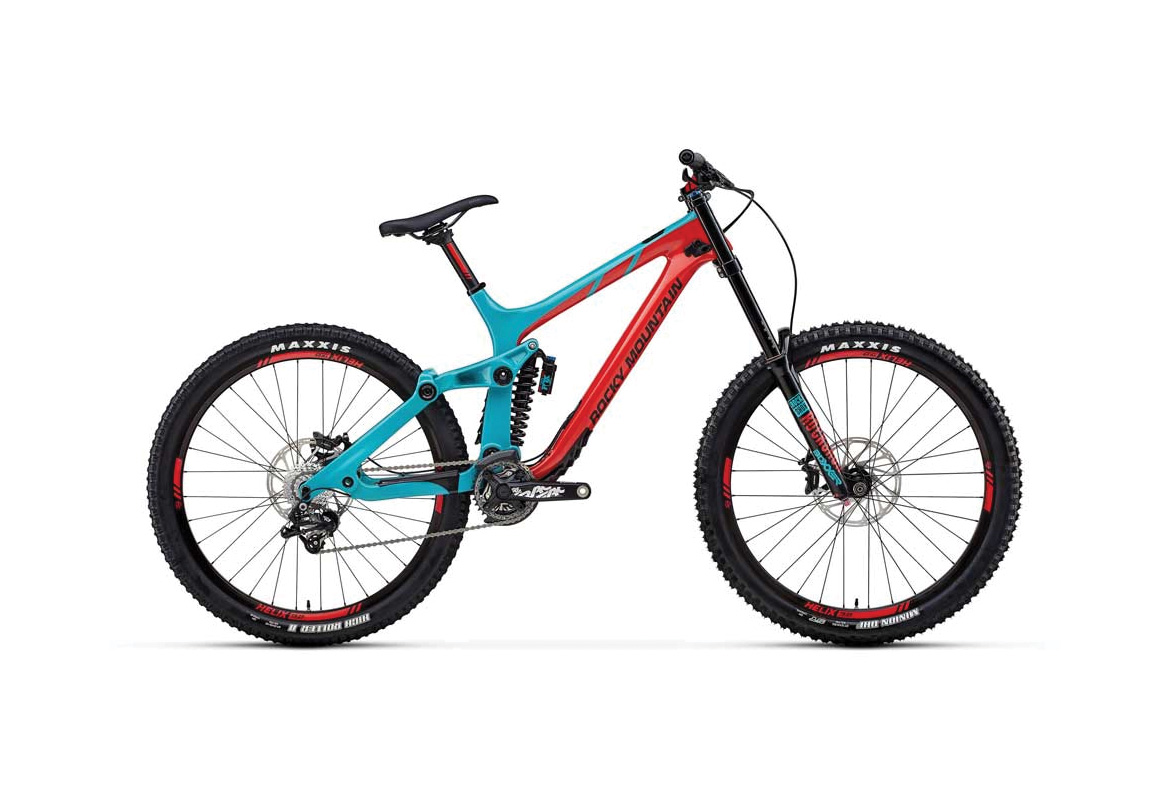
DH or Downhill
Downhill-specific bikes are intended for all levels of riders who want to enjoy the most out of the Bike Park. A full suspension, downhill-specific bike like the Rocky Mountain Maiden Park handles the Bike Park’s technical and free-ride terrain the best and is specifically designed for descending, not ascending. We recommend this type of bike for any level of rider in the bike park.
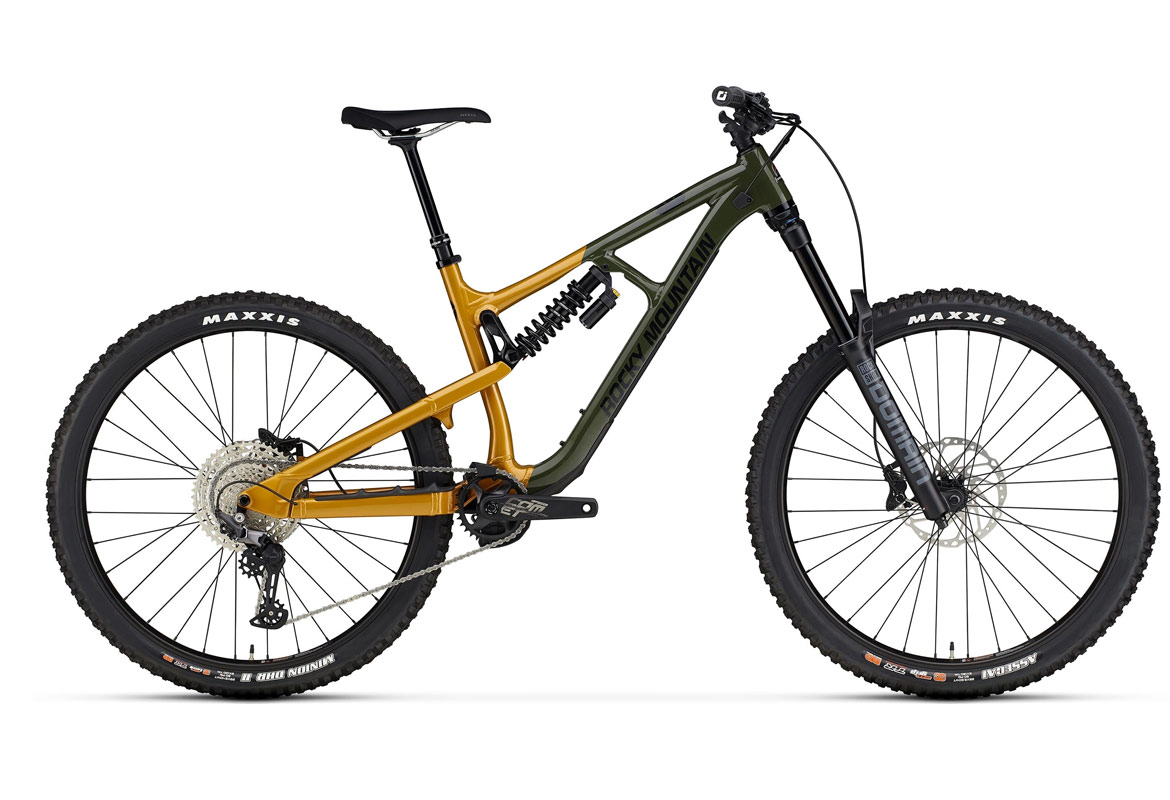
All-Mountain
All-mountain bikes combine full suspension in the front and rear with a more upright design allowing riders to descent yet ascend when needed. At the minimum, bike park riders should have an all-mountain, full-suspension bike, similar to the Rocky Mountain Altitude 30, which is best suited for beginner and intermediate terrain only. Please note, uphill riding is not permitted in the bike park.
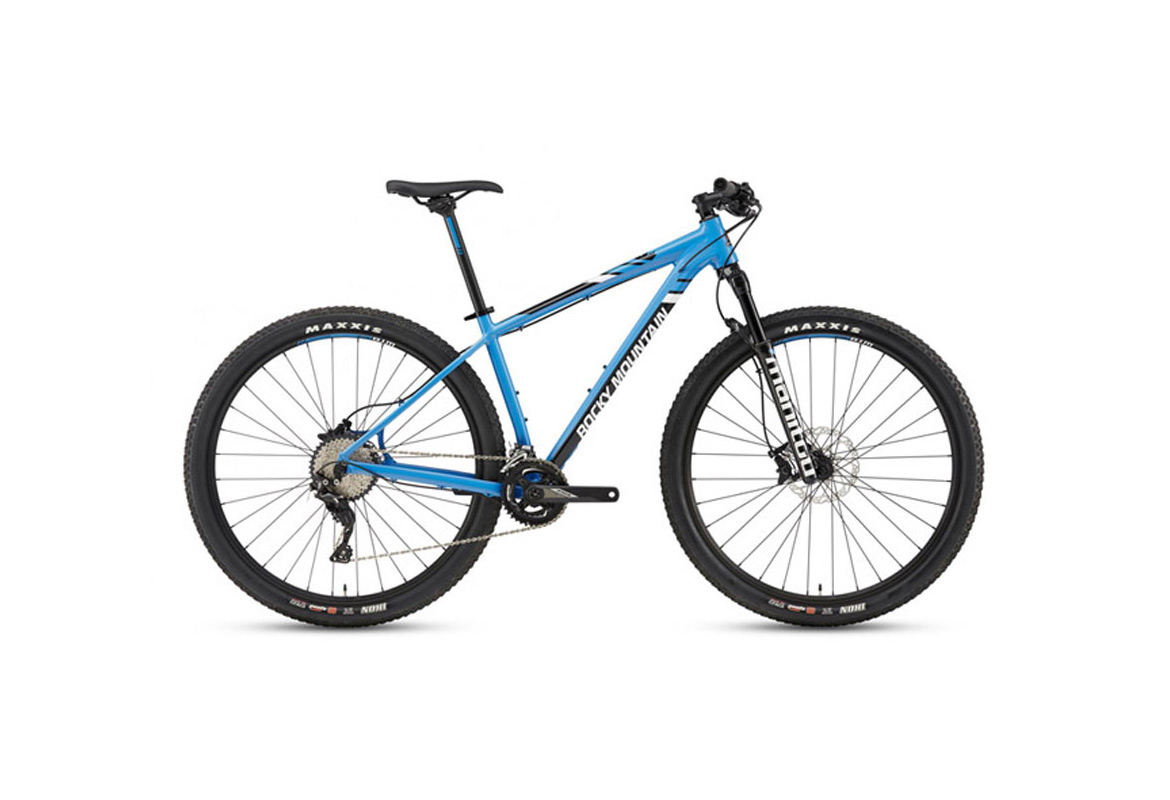
Cross Country
Cross-Country (Recommended for riding our XC Finger Trail) – Cross-country bikes generally have less suspension than most mountain bikes, making them ideal for pedaling long distances.Most XC bikes are hard-tail (no rear suspension) and not ideal or recommended for riding on our downhill trail network.
Mountain Bike Checklist
BEFORE YOU RIDE
- Have you purchased your ticket?
- Are you familiar with the bike park signage?
- Do you have hydration?
- Do you have a trail map?
- Do you have a mountain bike that is in good working order?
- Do you have protective gear?
BIKE RESPONSIBILITY CODE
Mountain biking involves elements of risk that common sense and personal awareness can help reduce.
Please adhere to the responsibility code, and share a safe experience with others.
- Ride in control and within your ability level. You must be able to avoid other people or objects.
- Stay off the lifts and trails if your ability is impaired by drugs, alcohol, or fatigue.
- All riders must wear a helmet. Other protective equipment is strongly recommended.
- Inspect your bike or have it checked by a qualified bike mechanic before you ride.
- Be sure to have the physical dexterity, ability, and knowledge to safely load, ride, and unload lifts. Ask the lift attendant for assistance if you need it.
- Be aware of changing conditions on trails and features. Inspect features before use and throughout the day.
- Stay on marked trails. Obey all signs and warnings. Do not cut switchbacks. Keep off closed areas.
- Avoid riders ahead of you. They have the right of way.
- Look uphill and yield to other riders when entering a trail or starting downhill.
- Do not stop where you obstruct a trail, or are not visible from above.
- If you are involved in or witness a collision or accident, you must identify yourself to the Bike Patrol.
- Do not feed, provoke, or approach wildlife.
General Information and Safety
NO SMOKING ON ANY TRAILS OR WHILE RIDING THE LIFT
- Mt. Washington is a smoke-free resort.
- No smoking is permitted anywhere in the Alpine.
More information about our smoking policy? Smoke Free
RIDING OUR SUMMER LIFTS
Tots 3+ Permitted to Ride the Scenic Chair.
To ride the chairlift, children must be able to aid in self-rescue in the unlikely event of an emergency. We Appreciate Your Cooperation For Your Safety.
WILDLIFE AWARENESS
An encounter with wildlife is something that visitors may experience when hiking in the Alpine. Please remember that you are a guest in their home territory! Bears, Cougars, and other animals are beautiful creatures and deserve our respect.
If you encounter a bear:
- Do not throw food or food waste into the forest, it can attract bears, and then the bear gets into trouble.
- Do not feed wildlife.
- Bike in groups and make lots of noise.
- Do not feed, provoke, or approach wildlife.
- Do not run: Bears can easily outrun humans. By running, you may trigger an attack. Pick up, small children. Whenever possible stay in a group. Back away slowly and speak softly.
- Give the bear space: Back away slowly and talk in a soft voice. Do not approach the bear or make eye contact.
- Leave the area or make a wide detour: If you cannot leave, wait until the bear moves out of the way and ensure that the bear has an escape route.
- If the bear rears up on its hind legs: It is curious and trying to see you or catch your scent better. It is not a sign of aggression. Back away slowly and talk softly.
- Watch for aggressive behaviours: A bear may display aggression by swinging its head from side to side; making vocalizations such as huffs, snorts, whoops, or moans; displaying teeth or claws; jaw popping; swatting at the ground; staring with eye contact; panting; or laying its. ears back. These behaviours usually indicate that the bear is stressed, acting defensively, and asking for more space. Attacks rarely follow, but this is a warning to leave the area.
If you meet a cougar:
- Never approach a cougar. Although cougars will normally avoid a confrontation, all cougars are unpredictable. Cougars feeding on a kill may be dangerous.
- Always give a cougar an avenue of escape.
- Stay calm. Talk to the cougar in a confident voice.
- Pick all children up off the ground immediately. Children frighten easily and their rapid movements may provoke an attack.
- Do not run. Try to back away from the cougar slowly. Sudden movement or flight may trigger an instinctive attack.
- Do not turn your back on the cougar. Face the cougar and remain upright.
- Do all you can to enlarge your image. Don’t crouch down or try to hide. Pick up sticks or branches and wave them about.
- If a cougar behaves aggressively, arm yourself with a large stick, throw rocks, speak loudly and firmly. Convince the cougar that you are a threat, not prey.
- If a cougar attacks, fight back! Many people have survived cougar attacks by fighting back with anything, including rocks, sticks, bare fists, and fishing poles.
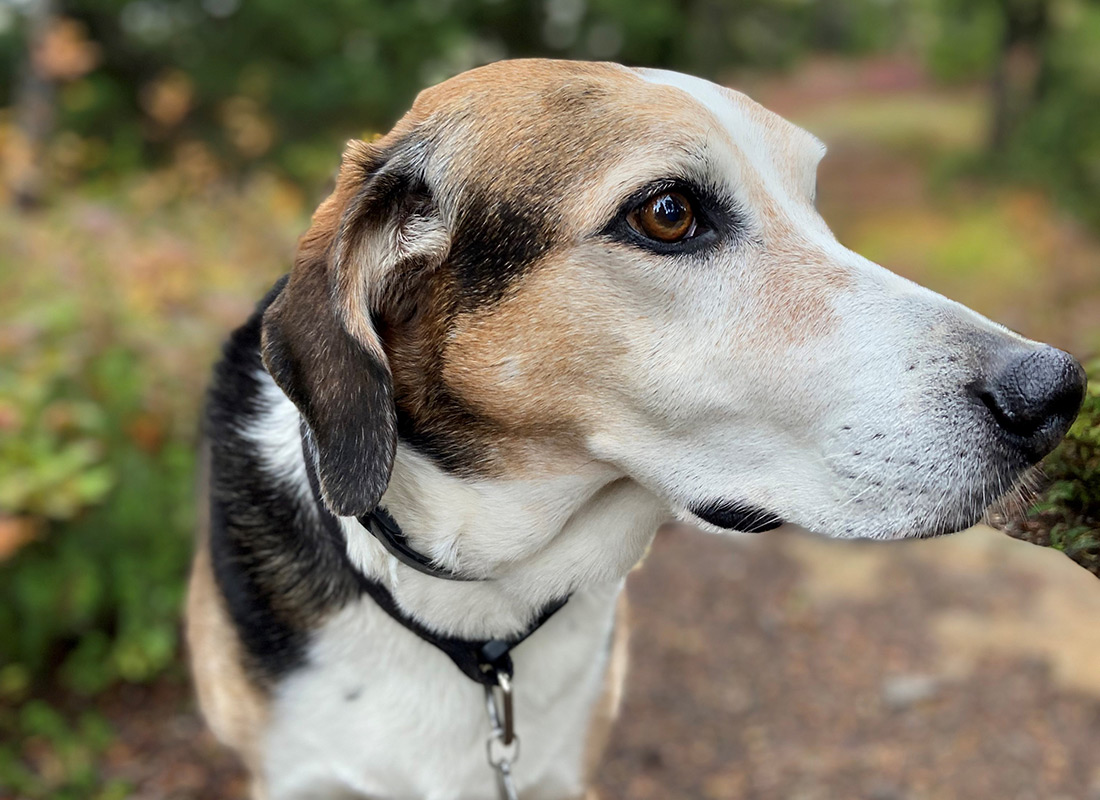
Vancouver Island
Pets
Backcountry areas are not suitable for dogs or other pets due to wildlife issues and the potential for problems with bears.
Pets are not permitted on any of our chairlifts or surface lifts, thank you for understanding.
Drone Use
As drones will grow in popularity we anticipate the request for use to become more prevalent in the years to come. As regulations and drone registration rules change we may have to adjust our policies.
The authorization for any usage on Resort property will require pre-approval with advanced notice.
Some guidelines for use are as follows;
- Never during normal daily operating hours on any runs that are open to the public.
- With approval, may be used at special events but not over people; or within a close distance of a ropeway
- With approval, may be used at Nordic but not over people
- With approval, may be used at Special Events in the Summer
General Information and Safety
NO SMOKING ON ANY RUNS OR WHILE RIDING THE LIFT
- Mt. Washington is a smoke-free resort.
- No smoking is permitted anywhere in the Alpine.
More information about our smoking policy? Smoke Free




